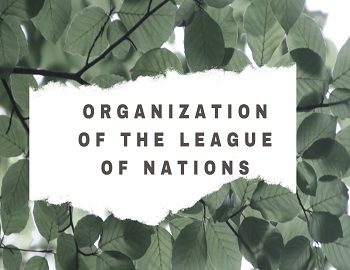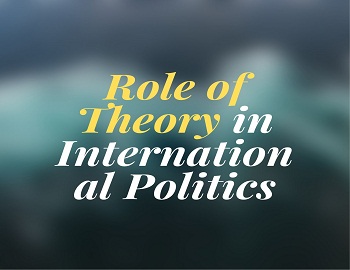Table of Contents
Organization of the League of Nations:
The League, as Gettle observes, “was not a state, nor was it a super-state. It was an organized association of sovereign states, created by treaty, a confederation world-wide in scope”. There were three main organs of the League- Assembly, the Council and the Secretariat.
The Assembly:
It was the supreme body of the league and consisted of all the members of the League. Although each member was allowed to send three representatives to the Assembly, each state had only one vote. The Assembly met annually and on some special occasions when necessary. The session of the Assembly was held in public and its decision had to be unanimous unless otherwise provided by the Covenant. The Assembly admitted, by a two-third majority, new members to the League. Every year it elected non-permanent members of her council.
The Council:
The League Council, which met four times a year or more frequently as occasion demanded, was the executive of the League of Nations. It consisted of two types of members- permanent and non-permanent. Originally it consisted of four representatives of the principal allied and associated powers, and four other representatives elected annually by the assembly. As time went on, the membership of the Council was enlarged to meet the changing circumstances. In 1926, a permanent seat was created for Germany, thus raising the number of permanent seats to five. The non-permanent seats were raised to nine. In 1928, a tenth non-permanent seat was created and in 1936 an eleventh seat was added.
As regards the functions of the Council, it was required to deal with any matter affecting the peace of the world. It also drafted the budget of the League, appointed and supervised various international bureaus and commissions, prepared plans for disarmament.
The Secretariat:
The Secretariat was a non-political body consisting of salaried officers. Its seat was located at Geneva in Switzerland. It was headed by a Secretary-General who was appointed by the Council with the approval of the Assembly. The Secretary-General was assisted by two Deputy Secretaries-General and two under Secretaries-General. The major functions of the Secretariat were to investigate international problems, to keep records, to draft resolutions for submission to the council and the Assembly.
The Covenant of the League also provided for the establishment of a Permanent Commission to advise the Council on military, naval and air questions. It also provided for the Permanent Advisory Commission on Armaments, the Mandates Commission, the Permanent Court of International Justice and the International Labour Organization.









Comments (No)